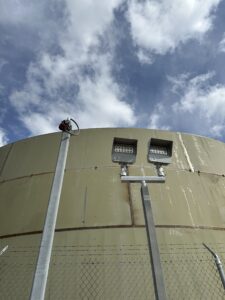Tesla Batteries Part 2
Moksha D -
Hi everyone and welcome back to my blog!
I will be continuing to share what I learned from my Tesla battery site visit.
Going back to the main purpose of my project, lithium-ion batteries have proven to be the most efficient way of storing renewable energy thus far. But it still experiences the issue that any battery does – efficiency.
This was certainly a challenge that I’ve had to accommodate for in my research because even though lithium-ion batteries are currently the leading form of storage, in 10 years it will likely become obsolete.
The Tesla megapacks are 93% efficient because of the amount of change in energy it undergoes. While being 100% efficient is obviously ideal, it’s just not feasible with the size of the batteries and safety measures that need to be taken.
Bigger buildings seem like they would be more efficient but if enough gas builds up or anything catches on fire, the entire building can explode in a matter of minutes.
With megapacks, fires are easier to contain than buildings but then the issue of public perception arises. If they see something on fire, it causes panic, public news reports, etc. While a battery catching on fire is not meant to be a secret, keeping batteries in buildings tends to be better for public perception but not for the likelihood of gas buildup.
One of many precautions that SRP, Salt River Project, uses is infrared cameras pictured below.

They monitor the heat and evaluate differences in temperature between megapacks. These infrared cameras send signals to personnel in Tesla with the ability to turn off an individual megapack if its temperature rises too high.
Thank you for reading!
